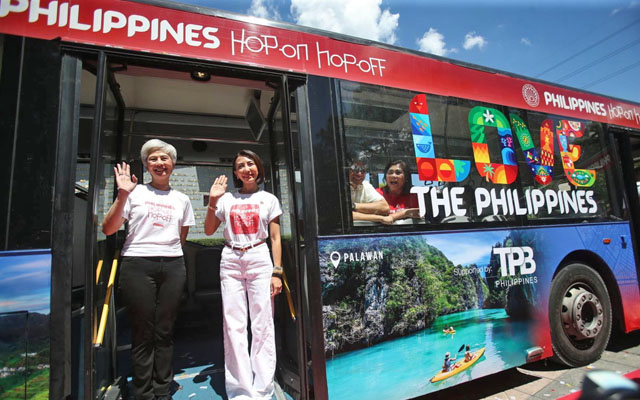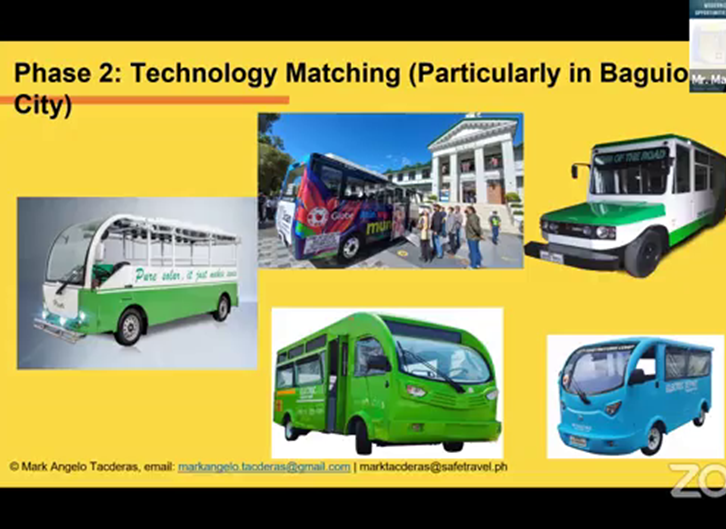Transit Advertising Philippines for Unmatched Brand Exposure
Wiki Article
Exactly How Transit Advertising And Marketing Can Change Public Transport Spaces Into Dynamic Marketing Platforms
Transportation advertising holds considerable capacity to redefine public transportation spaces into vibrant advertising and marketing platforms that involve and inform. By using innovative formats such as electronic screens and interactive stands, brand names can not only get to a diverse audience but additionally enhance the total traveler experience. This method develops a distinct possibility for brands to link with customers in a setup that is typically forgotten. As we explore the multifaceted advantages and advancing strategies of transportation advertising, it raises the concern of just how this transformation might redefine our interactions with both brands and the urban atmosphere.Advantages of Transportation Advertising And Marketing

In addition, transportation advertising is highly economical contrasted to typical media. It permits marketers to achieve high perceptions at reduced prices, optimizing return on financial investment. The restricted audience of travelers provides a possibility for brand names to communicate their messages to people who are frequently responsive throughout their traveling times.
Furthermore, the vibrant nature of transit advertising and marketing allows projects to be upgraded frequently, making sure that messaging continues to be pertinent and timely. This flexibility can be essential in replying to market fads or advertising occasions, maintaining the brand name top-of-mind for consumers. Finally, the pervasive visibility of transit marketing adds to brand recall; repeated exposure within acquainted traveling contexts reinforces brand name recognition and promotes consumer loyalty, eventually driving sales and boosting brand name online reputation.
Types of Transit Advertising
Mass transit systems give various layouts for marketing, each satisfying different advertising strategies and audience involvement approaches. One famous kind is external bus and train covers, which cover the entire vehicle and produce a mobile billboard result, allowing for high exposure in metropolitan settings. These covers can record attention as they go across active streets, reaching a diverse target market.Another preferred style is indoor marketing, which consists of posters, electronic screens, and ads on transportation seats. These placements involve passengers during their trip, enhancing brand messaging in a constrained area. Digital shows, in particular, provide the benefit of vibrant material, enabling advertisers to update messages in real-time.
Station advertising and marketing is additionally significant, including posters, banners, and interactive booths within transit stations. These advertisements take advantage of foot website traffic and can target details demographics based upon place.
Lastly, marketing collaborations with transportation authorities can lead to special campaigns, such as themed transit experiences or occasions, boosting the general engagement with commuters. Each kind of transportation marketing supplies unique benefits, permitting brands to tailor their method to effectively reach their target market within the public transportation ecosystem.
Involving Travelers Effectively
Travelers are progressively flooded with advertising and marketing messages during their day-to-day travels, making it vital for brands to engage them in innovative ways. To catch interest in this crowded area, marketers should focus on creativity and significance. Utilizing attractive visuals and succinct messaging can considerably improve the possibility of involvement.Interactive elements, such as QR codes or augmented fact features, can also transform fixed advertisements right into immersive experiences, promoting a deeper connection with the target market. Brand names should concentrate on addressing travelers' rate of interests and demands, customizing messages to reverberate with their way of life, whether via promotions for local businesses or solutions designed to improve their travelling experience.
Furthermore, timing plays a vital role; strategically placing ads throughout optimal travelling hours can make the most of visibility and effect. Engaging travelers properly additionally entails leveraging social media assimilation, allowing passengers to share their promos or experiences directly from transportation systems, consequently enhancing brand name reach.
Fundamentally, effective engagement rests on recognizing the commuter trip and creating engaging, interactive, and relevant advertising and marketing experiences that not just record interest however additionally drive action and loyalty. By doing so, brands can change public transport into a dynamic advertising and marketing system that reverberates with its audience.

Measuring Advertising Influence
Exactly how can brands properly analyze the effectiveness of their marketing campaign en route atmospheres? Gauging the impact of transit advertising calls for a complex technique that incorporates measurable and qualitative metrics. One widespread technique is tracking interaction through mobile analytics, where brands can examine foot website traffic patterns and application interactions previously, throughout, and after campaigns.Studies can provide important insights into brand name recall and consumer sentiment, enabling brands to determine exactly how well their messages resonate with commuters. In addition, monitoring social media engagement pertaining to details projects can expose shifts in public understanding and brand name conversation.

Moreover, collaborating with transportation agencies can enhance dimension accuracy, as they frequently have comprehensive market information on ridership trends. By incorporating these methods, brand names can establish a detailed understanding of their advertising and marketing efficiency, making certain that their projects not just get to however additionally impact their target market properly.
Future Patterns in Transportation Marketing
A significant change is expected en route marketing as technological advancements and altering consumer behaviors improve the landscape. Transit Advertising try this web-site Philippines. The assimilation of interactive media and electronic display screens is expected to boost interaction, permitting brands to provide vibrant web content that resonates with diverse audiences. As public transport systems welcome clever technology, advertisers will certainly leverage real-time information analytics to customize messages based Get the facts upon passenger demographics and habitsFurthermore, increased fact (AR) is positioned to transform the means travelers engage with ads. By supplying immersive experiences, AR can change a mundane trip into an interesting story that records interest and promotes brand name commitment. This innovation will likely encourage advertisers to develop more experiential campaigns that drive consumer communication.
Sustainability is one more essential pattern influencing transit advertising. As environmental consciousness grows, brands will progressively seek to align with environmentally friendly practices, making use of lasting materials and promoting eco-friendly initiatives within their projects.
Final Thought
In final thought, transit marketing provides considerable advantages by enhancing brand presence and involving a restricted audience. Through various formats, such as outside covers and electronic displays, it transforms public transport right into a lively advertising system. Reliable engagement strategies and durable measurement methods even more magnify its impact. As trends advance, the This Site possibility for innovative communications between brands and travelers is poised to expand, making certain that transit marketing continues to be an essential component of contemporary marketing strategies.Transportation advertising holds significant capacity to redefine public transport spaces into dynamic marketing platforms that educate and involve. The prevalent existence of transit advertising and marketing adds to brand recall; duplicated exposure within familiar traveling contexts strengthens brand awareness and cultivates customer loyalty, ultimately driving sales and boosting brand credibility.
How can brand names precisely evaluate the efficiency of their advertising campaigns in transportation settings?In conclusion, transit marketing uses significant benefits by improving brand presence and engaging a restricted audience. Transit Advertising Philippines. As patterns evolve, the possibility for innovative communications between travelers and brands is positioned to grow, ensuring that transportation advertising stays an important part of modern advertising and marketing methods
Report this wiki page